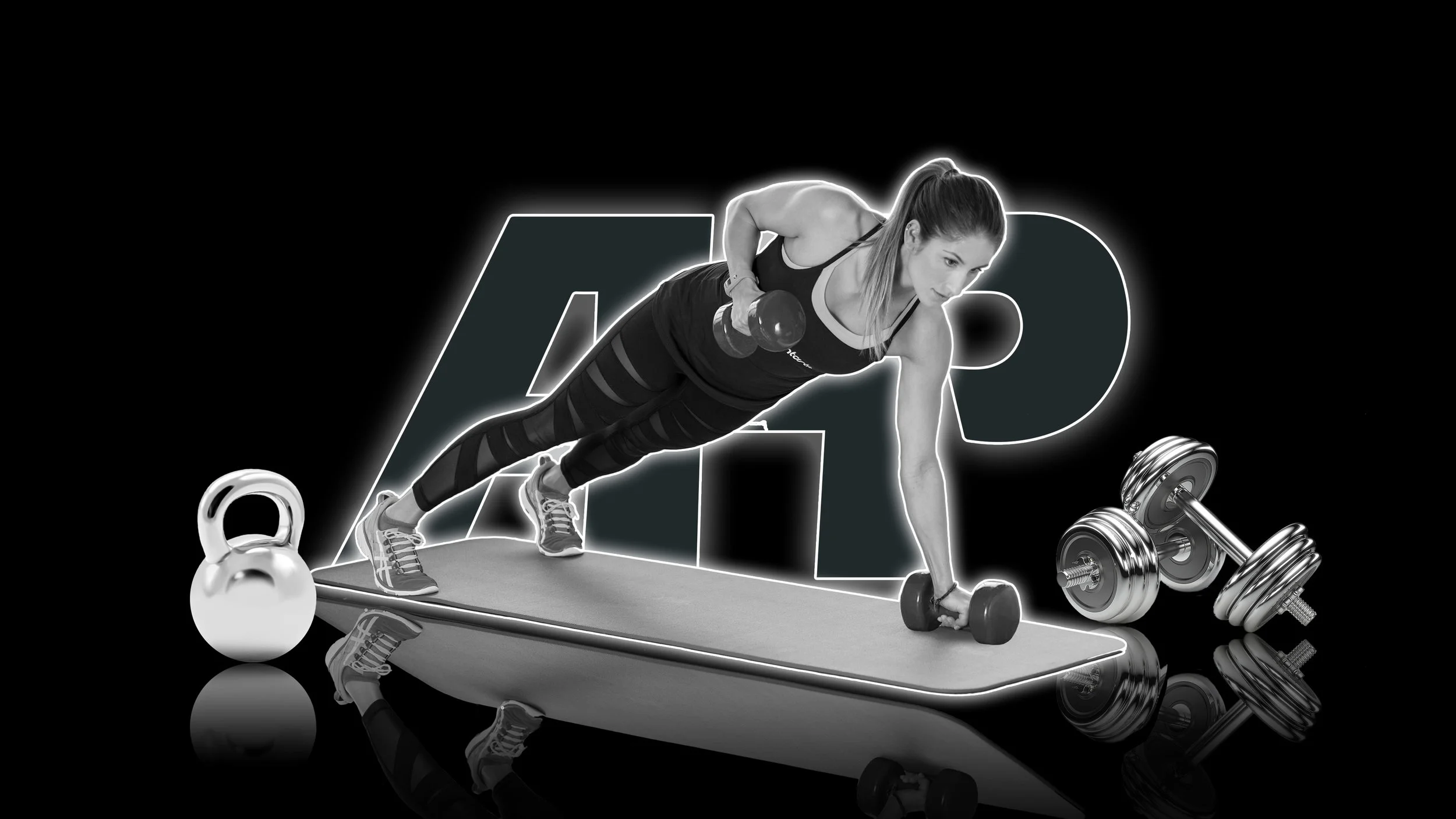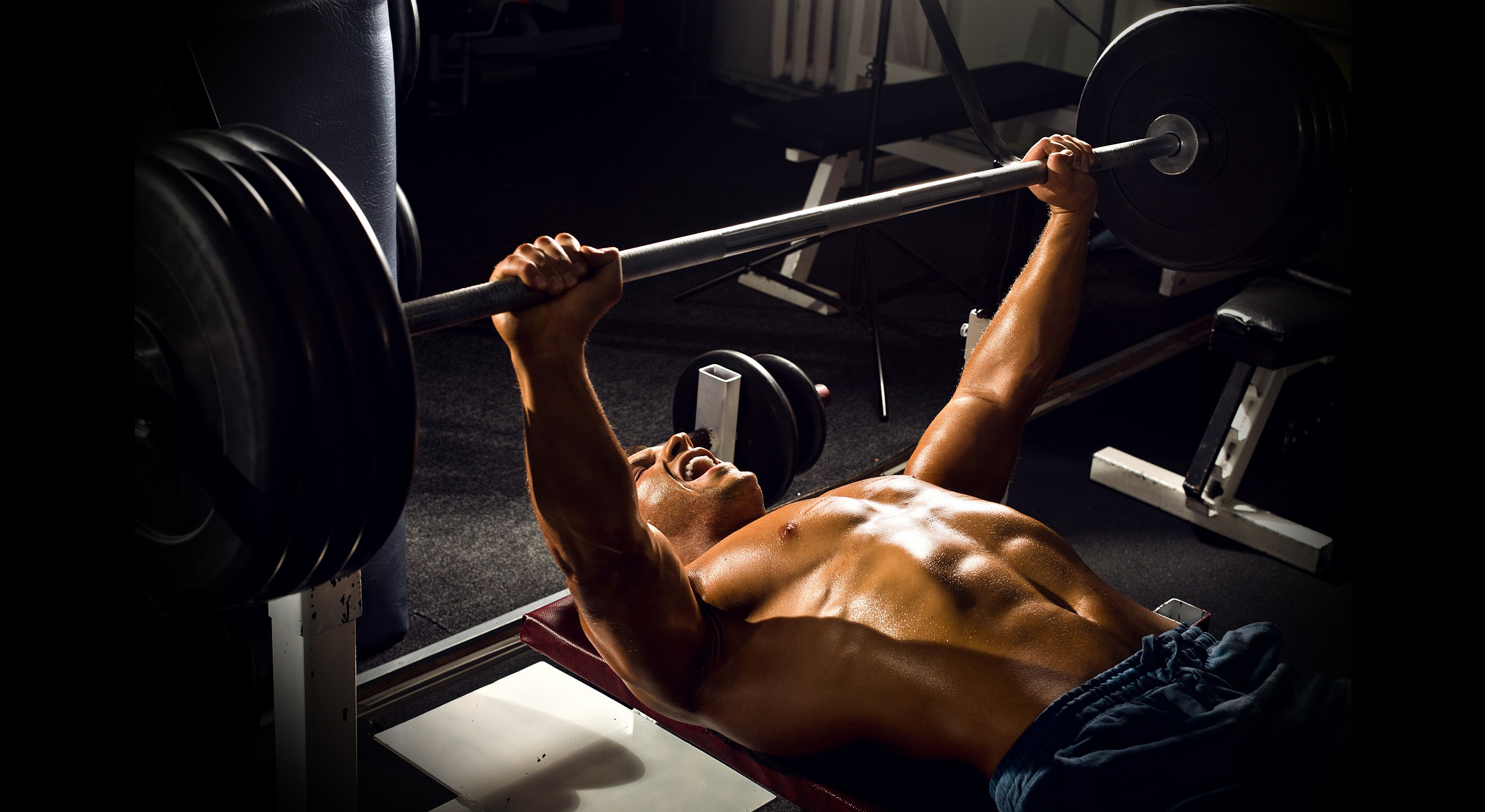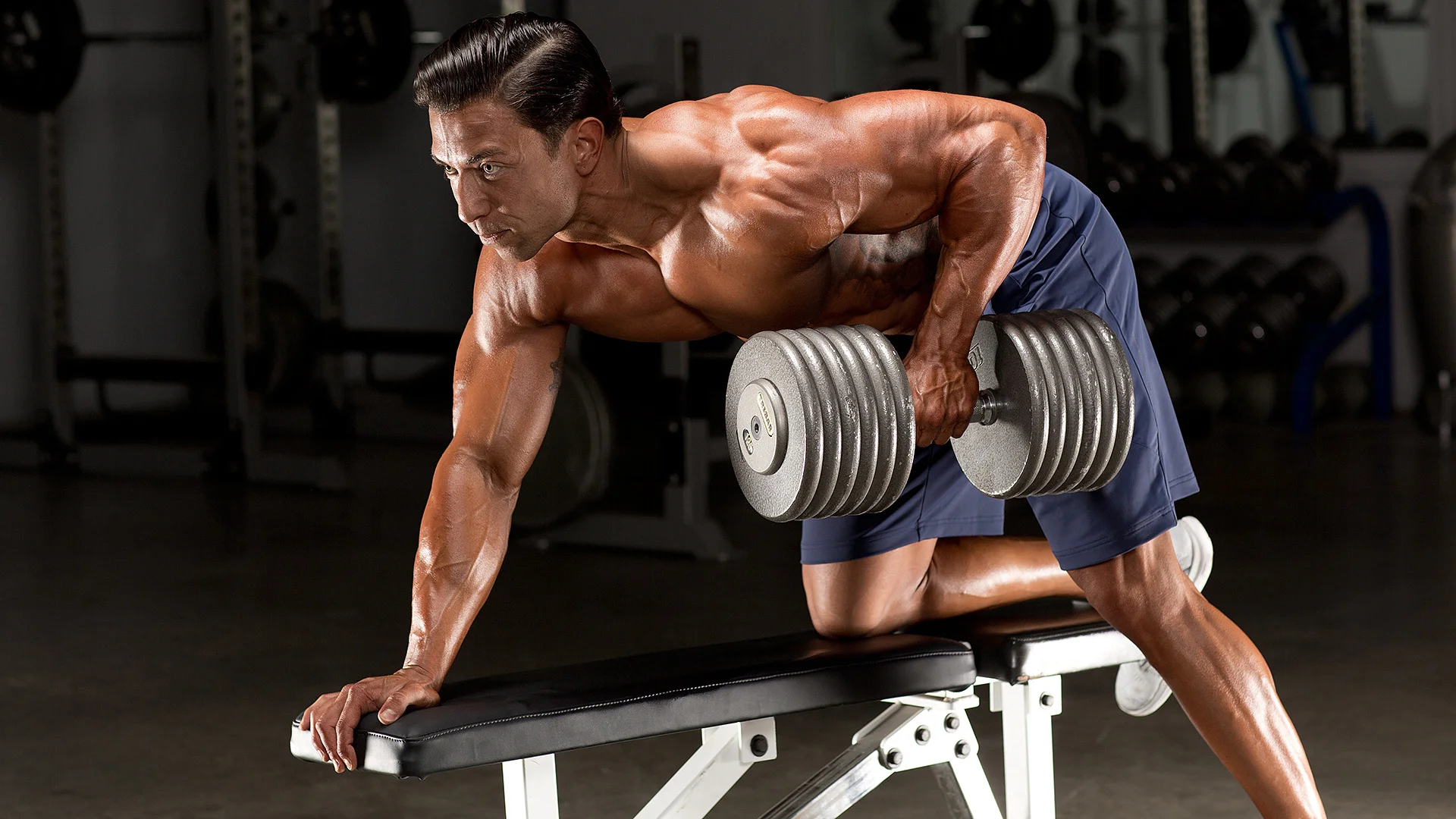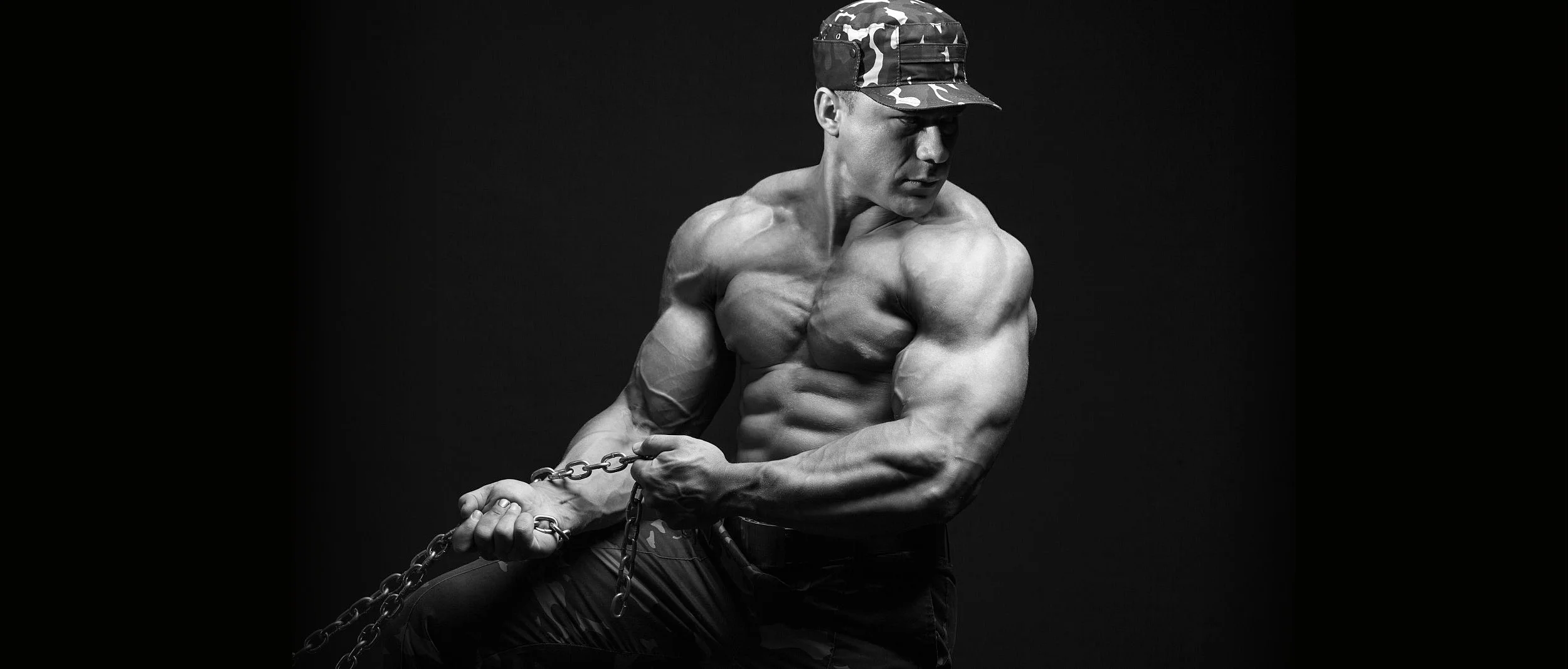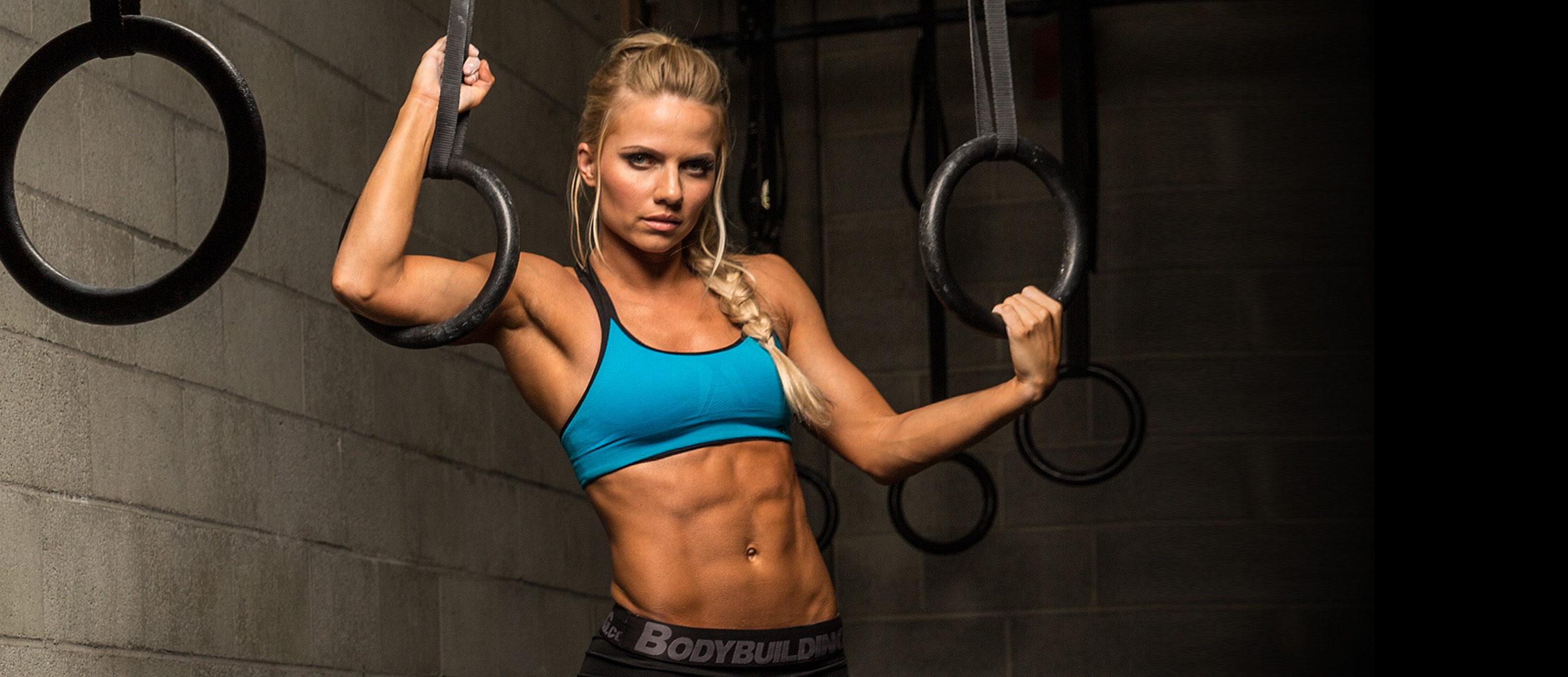Renegade Rows: The Ultimate Breakdown
Dr. Joel Seedman, Ph.D.
Renegade rows and variations thereof are some of the most effective exercises not only for targeting the upper back and lats but also for absolutely annihilating the entire musculature of the core (see Part 2 for unique variations). In fact, when performed properly the level of recruitment to the core and abdominals is difficult to replicate with any movement. Essentially a renegade row involves holding an isometric single arm plank while simultaneously performing strict single arm rows.
Besides providing significant extension forces that the lifter must resist by firing their deep transverse and rectus abdominals, there are also significant anti-rotational forces involved. As a result the lifter also has to activate the deeper core muscles including the internal and external obliques as well as the quadratus lumborum, serratus muscles, and deep pelvic floor muscles.
Make Renegade Rows Better with Eccentric Isometrics
Besides using proper mechanics with minimal momentum, one of my biggest stipulations when it comes to renegade rows is performing them in a constant tension fashion without placing the weight back down on the floor each repetition. In fact, nearly every variation I use with my clients and athletes as well as myself employees this methodology often using a brief eccentric isometric protocol (slow negative followed by a brief pause in the stretched position). Besides maximizing proprioception and sensory feedback via eccentric tension and sretch, the targeted musculature receives much greater stimulation as the intensity of activation is exponentially greater compared to deadstop variations. Read more about eccentric isometrics here.
In fact, I’ve trained many individuals who can pump out rep after rep with fairly heavy loads in the traditional fashion yet can barely manage to squeak out several reps with light loads using the eccentric isometric protocol due to the extreme core fatigue and constant tension. Placing the weight back down to the floor each rep provides significant relief and rest for the core as well as the upper back and lats thereby reducing the effectiveness of the movement. Simply put, if you’re looking to maximize the effectiveness of your renegade rows, perform them in a constant tension eccentric isometric fashion.
Positioning Cues
When performing renegade rows the goal should be to keep the body as one tall straight line from head to toe while also maintaining perfect posture. This includes keeping the chest out, shoulders back, hips tall, stomach in, and staying tall on the balls of the feet rather than sagging back towards the heels.
Additionally, any body rotation particularly on the concentric lifting phase should be kept to a minimum. With that said, a very slight amount of upper back rotation is acceptable when using heavier loads as this can help the individual lock the top contracted position in and produce a stronger squeeze in the upper back and lats. However, this should not be initiated from the low back or lumbar region.
In regards to torso and body shifting, a slight degree of hip and torso shift is not only acceptable but in fact necessary during renegade rows. The common concept that the hips and torso will be perfectly symmetrical and square to the floor during a renegade row is a myth and misconception that’s been perpetuated by the fitness industry. With this in mind the individual should allow a slight shift in the body to one side during renegade rows without going too extreme. Generally speaking one side of the torso will be 1-3 inches higher. Significantly more than this and the individual is likely compensating due to lack of core and upper back strength.
In the bottom stretched position, the rowing arm should be able to fully extend without the dumbbell/weight hitting the floor. In fact, in the fully extended position, the weight should be hovering roughly 1-3 centimeters above the floor. If the weight does touch the floor, this likely indicates that the lifter is either allowing their torso to sag as a result of weak core activation, or they’re letting their shoulder excessively protract at the bottom.
Lastly, in order to keep the hips tall and avoid a sagging hip position (which contributes to low back arch), the lifter SHOULD NOT attempt to intentionally squeeze the glutes as this will actually contribute further to the extension forces acting on the spine. Instead the hip flexors (not the hip extensors) should be aggressively firing to keep the hips tall while also keeping the core hollowed out by pulling the stomach in forcefully throughout. Remember we’re resisting hip and lumbar extension forces therefore we need to be firing the hip and lumbar flexors, not extensors. This is true of any plank or anti-extension movement. Read more about this topic here. With that said, when it doubt, it’s always better to have the hips a bit too high than too low. Furthermore a narrower stance will inevitably produce a hip position that’s slightly taller and slightly V-d up since the lifter won’t be able to spread the hips and level the body out to the same extent as they would with a slightly wider stance.
Rule of Thumb
Possessing a proper balance of strength between the anterior and posterior sides of the body is critical not only for performance and posture but for overall joint health. Heavy renegade rows are one of the few all-in-one exercises that demand such a fine balance. With that said, generally speaking, I make it a rule of thumb that you should be able to perform renegade rows with half your bodyweight. Yes, it’s a tough standard but by no means impossible as I demonstrate in both the first and second videos with 100 pound dumbbells at a bodyweight of approximately 200 pounds.
Additionally you should be able to perform renegade rows with 80-90% of the loading you would typically use for other rowing exercises (such as single arm rows). For instance the heaviest weight I’ll use for traditional single arm rows is 120 pounds. If you’re unable to reach these standards it’s for one of two reasons. Either your core strength needs work, or you tend to cheat your way through most rows by using excessive momentum in which case the renegade rows forced you to use stricter form thereby minimizing your ability to cheat your way through heavy loads.
If you really want to maximize your functional performance with renegade rows, make it your goal to hit half bodyweight with the bird dog renegade row as I show here.
Rotational Method
If you want to further enhance both the effectiveness and the difficulty of the movement, try performing renegade rows using the rotational method as I demonstrate in the video.
This rotational component allows a more supinated grip position in the top contracted position which maximizes tension and shoulder centration. In contrast, the pronated grip in the bottom position allows maximal eccentric elongation and stretching of the lats.
Not only does this provide a very strong hypertrophy stimulus for the entire upper back and lats but this helps optimize scapulohumeral rhythm and glenohumeral joint mechanics. In other words it reinforces proper shoulder function and positioning. Additionally, the rotational forces create additional torque on the torso and spine thereby requiring greater activation throughout the entire musculature of the core and abs to resist these rotational forces.
13 Additional Benefits
1. Target Both Function and Appearance
Like any plank variation there are significant extension forces you’re resisting during renegade rows. Only this time your doing so while maintaining a semi-tripod position making the drill incredibly challenging. Besides crushing the deep musculature of the transverse abdominis (the corset of the spine that is responsible for keeping the abdominal wall tight and structurally sound), the rectus abdominal muscles (six-pack muscles) must work overtime to keep your low back and spine from over-extending. In other words, you’re improving functional core stability while simultaneously sculpting your abs and etching out your six-pack.
2. Involve Anti-Rotation
Few exercises involve simultaneous anti-rotation and anti-extension. However, the renegade row does just that making it one of the most effective drills your can perform for engaging nearly every muscle in the core. This includes the smaller stabilizers responsible for resisting rotational forces similar to those used during a Pallof press, such as the internal and external obliques, and quadratus lumborum. Besides improving the appearance of your sculpted beach body, these muscles are critical for spinal health, injury prevention, athletic performance, and daily functional tasks. Master the renegade row using the methods outlined in this article and watch your low back pain dissipate.
3. Improve Upper Body Strength
Although the renegade row is a devastatingly difficult core exercise, the entire upper body also gets pummeled. The arm that’s rowing taxes the upper back, lats, rear delts, biceps, grip, and forearms. The support arm is working overtime to stabilize your shoulders by packing and centrating the glenohumeral joint ultimately taxing the chest, lats, triceps, deltoids, and upper back. That’s because you’re essentially holding a single arm weighted plank. For a well-trained individual, the upper body should fatigue at roughly the same rate as the core and abs.
4. Improve Function in the Lumbopelvic Hip Complex
The renegade row is one of the most effective drills you can perform for targeting the lumbopelvic hip complex. If you have trouble with hip, groin, knee, or low back pain, chances are you need to strengthen the muscles around the hips and pelvic floor not to mention your core and spinal stabilizers. As an added bonus your hip flexors will get quite the working over during renegade rows making them highly effective for improving sprint speed and performance.
5. Address Symmetry of the Core
Most traditional abdominal exercises including planks, leg raises, and anti-extension drills are greater for taxing the musculature of the core. Unfortunately a majority of them involve bilateral loading (both sides working at the same time) making it easy for one side of the core to dominate the movement. As a result the strong side has a tendency to get stronger while the weak side can oftentimes become weaker. To address this it’s imperative to target the core symmetrically by targeting each side individually.
One of the best drills to eradicate this problem is the renegade row as each side of your core will be forced to work intensely and equally throughout the exercise. If you feel like you have a difficult time with symmetrical loading during lower body exercises (i.e. one leg supporting more weight during squats), chances are you need to work on core symmetry from side to side of your body. Just make sure you incorporate the same weight and reps on each side while using proper mechanics and alignment on both sides as well.
6. Transfer to Athletic Performance Via Contralateral Activation
Contralateral movement patterns (opposite arm and leg working together) make up the foundation of human movements and athletic performance. In fact, most rotational movements including kicking, throwing, punching, and even various agility/cutting maneuvers involve something known as the serape effect where the rotational muscles of the hips and core must work together to coordinate movement from the opposite arm and leg of the body. Sprinting and running work in a similar fashion as the cross-crawl pattern of the human gait requires the opposite arm and leg to work in unison to create rhythmic and coordinated movement.
Unfortunately many individuals never fully optimize these contralateral movement patterns thereby sacrificing function, performance, and joint health. The renegade row is one of the single most effective drills you can perform to help re-wire this contralateral activation pattern thereby enhancing force production, power output and quality of movement. In fact, once you begin performing these you’ll notice that the opposite arm and hip must work together to bear a majority of the load not only through intense intramuscular tension but through coordinated and rhythmic contractions. As a result your athletic performance, lifting strength, and daily functional activities will receive a tremendous boost.
7. Increase the Intensity and Efficiency of Core Stabilization Training
Many core exercises such as standard plank variations are fairly low intensity making them very ineffective for maximizing the stimulus to the desired musculature. Fortunately renegade rows require very little time to crush your core as one set of several high quality constant tension reps will do more for your entire core than just about any exercise. Instead of mindlessly holding planks for several minutes try performing a few sets of properly executed renegade rows in a slow and controlled fashion. You’ll not only save time and improve the efficiency of your workout sessions but your whole body from head to toe will be smoked.
8. Require Little Equipment
How many exercises can devastate your entire core, hips, and upper body while using nothing more than a pair of dumbbells and the ground you’re standing on? Well I’m not sure about the actual number but it’s probably only a handful and the renegade row is one of those. Renegade rows can literally be performed anytime at any gym regardless of how crowded it is making it conducive as a high intensity core drill for super-setting with other compound movements such as squats, deadlifts, or Olympic lifts.
9. Improve Breathing Patterns
Knowing how to control your breathing (i.e. sipping air through a straw) while maintaining heightened levels of spinal rigidity, core tightness, and full body tension is an invaluable skill. This is pivotal not only for lifting heavy objects but for daily living and postural control. Renegade rows represent the epitome of teaching proper breathing patterns while aggressively activating nearly every muscle in your body.
10. Teach the Lifter to Stay Tight
The ability to stay tight and create full body tension is pivotal for eliminating energy leaks and areas of weakness throughout the kinetic chain. Besides decreasing your risk for injury and joint pain, this has a tremendous impact on your ability to transmit force and absorb incoming forces. Once you start incorporating renegade rows, specifically eccentric isometric variations, not only will you be less prone to injury but your strength on nearly all your lifts will significantly improve.
11. Minimize Cheating and Lumbar Extension
Renegade rows with eccentric isometrics are surprisingly difficult to cheat. Although it’s possible to use some degree of rotation and twisting (which should mostly be avoided) it’s nearly impossible to have sagging hips and lumbar extension as the dumbbell will hit the floor. If you’re going to reach full extension with the arm and complete the eccentric portion of the row without the weight touching, you’ll be required to keep your entire body tall and locked in without excessive lumbar extension.
12. Improve Mental and Physical Conditioning
If you’re inexperienced with single arm planks or renegade rows you’ll be surprised at the level of mental and physical toughness necessary to lock these in. Besides teaching the lifter Jedi-like concentration, mental fortitude and high intensity effort, don’t be shocked if your heart rate goes through the roof when finishing these. In fact, you’ll probably feel like you just ran several sprints as you’ll be gasping for air after just one set. Incorporating these into a high intensity conditioning routine as part of a larger circuit will do wonders not only for your strength but also for your stamina and endurance.
13. Allow for Simple Regressions, Progressions, and Modifications
The renegade row is one of the most simple exercises there is to regress and progress based on the individual’s level of strength and function. As a result you’ll be privy to endless options and increasingly difficult variations of the drill. To begin with you can have the athlete place their arm on a bench while keeping their feet on the floor. Over time you can progress them by using stability balls, elevated positions, Olympic rings, unstable surfaces, weighted variations, slide-boards, chaos versions, bear crawl variations, quadruped variations, and more. Additionally, the renegade position can be modified to include a variety of movements patterns other than rows.
Common Question!!!
"Dr. Seedman, why not simply use traditional single arm dumbbell rows to hit your back instead of doing a combo exercise like this that may not target the back as intensely? “
My response: In reality I often program renegade rows as a core exercise, not a back exercise. However a well trained individual should get to the point where their core is so strong that they can perform renegade rows with very heavy weight without their core giving out, but instead their upper back and lats being the limiting factor. That's why as I show in several videos, I'm using half my bodyweight (200 pounds) and rowing a 100 pound dumbbell.
Simply put, the goal is to get to the point where you can perform renegade rows with such heavy loads and with such a stable core, that the upper back (rowing component) is what fatigues first, not the core. Until that time, simply use renegade rows as an intense core exercise.
See PART 2 here as I highlight dozens of unique renegade row variations including regressions, progressions, and advanced modifications.
















